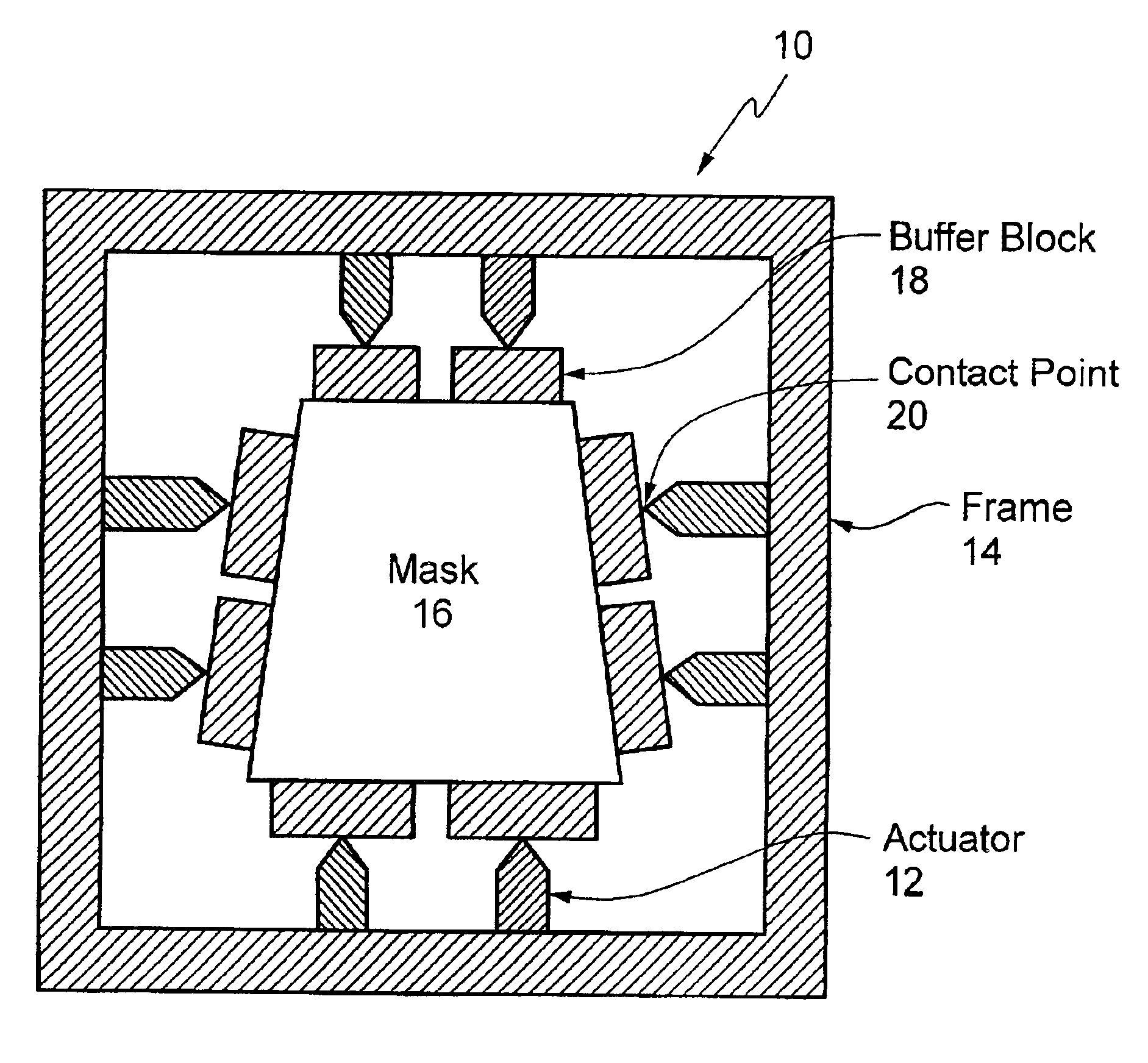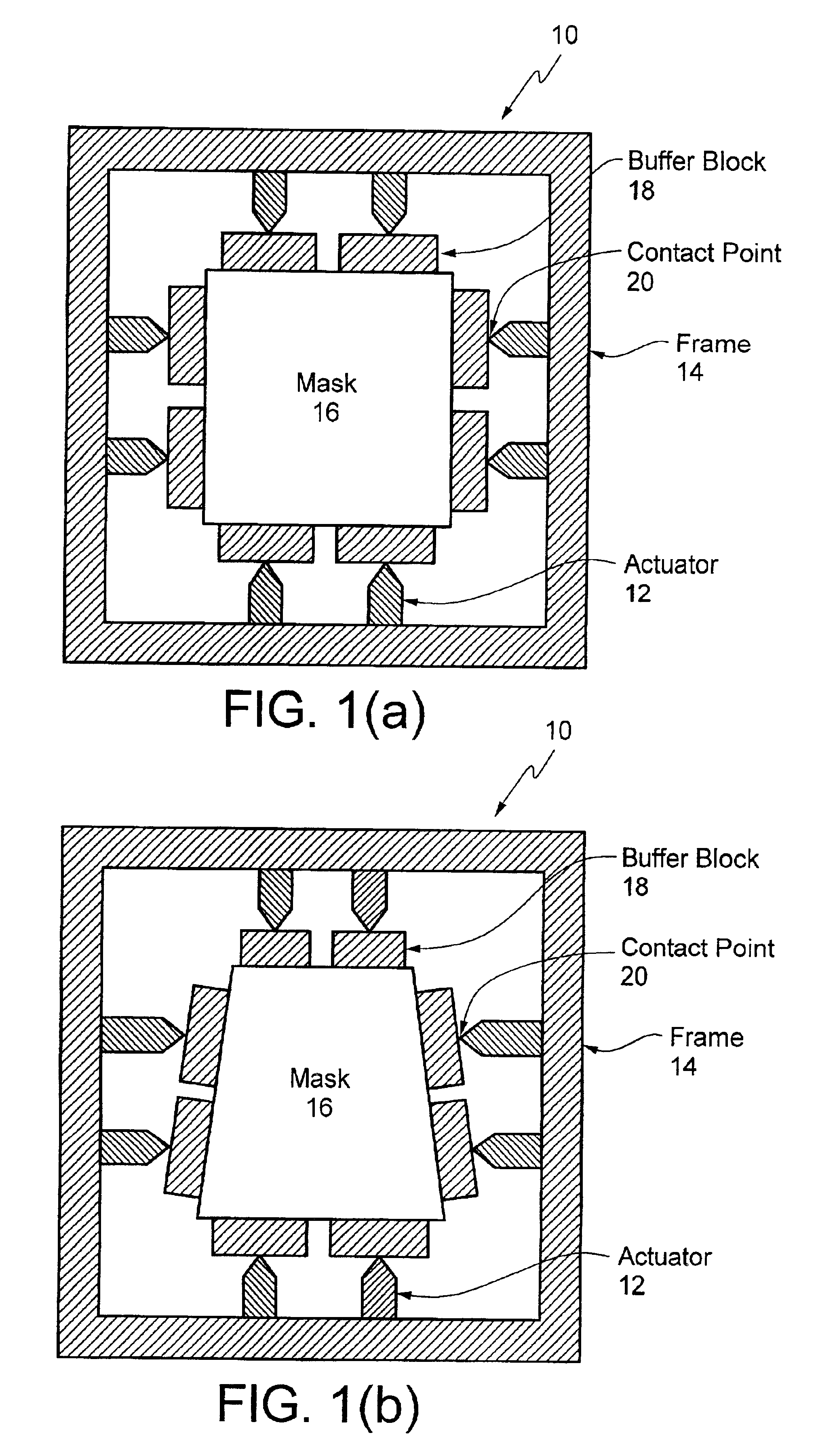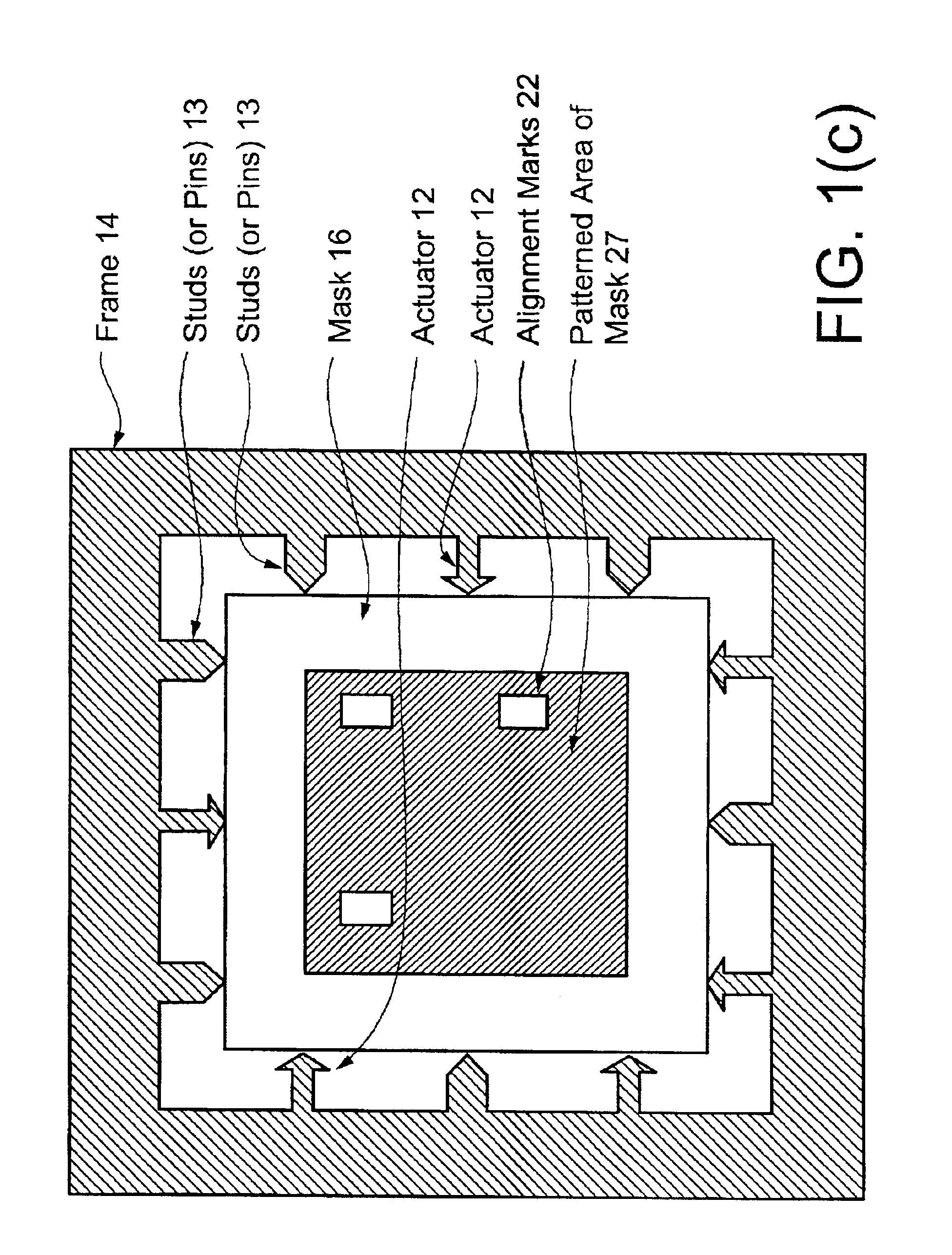Holder, system, and process for improving overlay in lithography
a technology of overlay and lithography, applied in the field of vlsi lithography, can solve the problems of limiting alignment accuracy, product failure due to misalignment becoming more prevalent, and difficulty in aligning and overlaying, and achieve the effect of reducing misalignment in the exposure field
- Summary
- Abstract
- Description
- Claims
- Application Information
AI Technical Summary
Benefits of technology
Problems solved by technology
Method used
Image
Examples
Embodiment Construction
The present invention is generally directed to an adaptive mask holder that uses actuators to apply force to one or more sides of a mask to produce a controlled deformation of the mask that cancels misalignment due to the distortion that is observed between the projected image of the mask and an existing pattern on a wafer.
The present invention is applicable to photolithography. The present invention is also applicable to other lithography types, for example, deep UV and EUV projection lithography and to nano-imprinting techniques. There is no lens in nano-imprinting—the mold, which applies a pattern directly to the wafer, is deformed to match the distortions in the pattern printed on the wafer. The present invention is also useful for overlay and metrology applications.
As described herein, a tool is defined as a machine that uses a mask for some purpose. In VLSI lithography, an image of the mask is recorded on the wafer—thus an EUV scanner step and scan projection camera including ...
PUM
 Login to View More
Login to View More Abstract
Description
Claims
Application Information
 Login to View More
Login to View More - R&D
- Intellectual Property
- Life Sciences
- Materials
- Tech Scout
- Unparalleled Data Quality
- Higher Quality Content
- 60% Fewer Hallucinations
Browse by: Latest US Patents, China's latest patents, Technical Efficacy Thesaurus, Application Domain, Technology Topic, Popular Technical Reports.
© 2025 PatSnap. All rights reserved.Legal|Privacy policy|Modern Slavery Act Transparency Statement|Sitemap|About US| Contact US: help@patsnap.com



